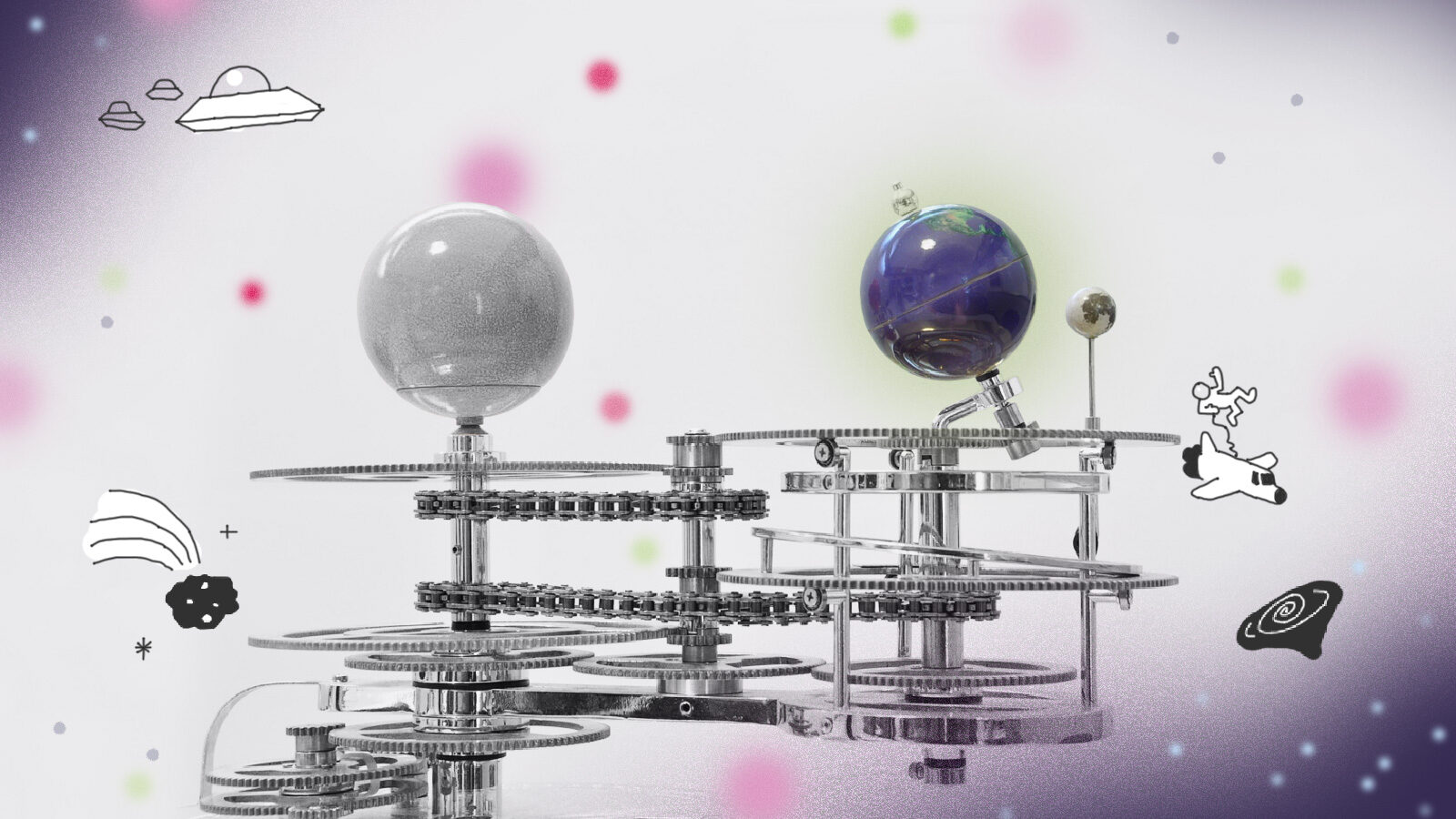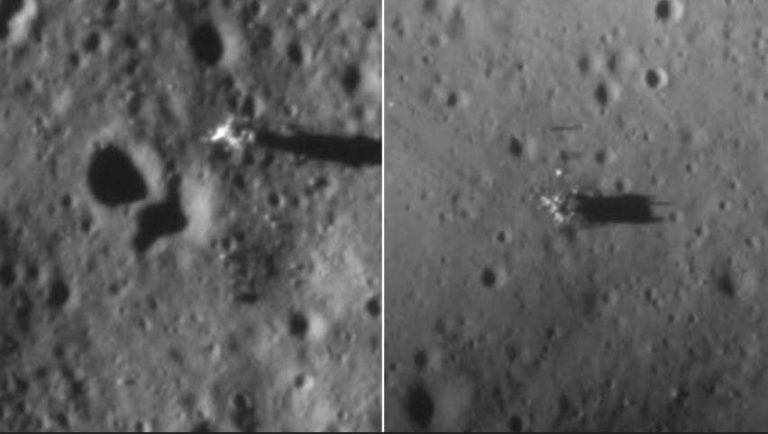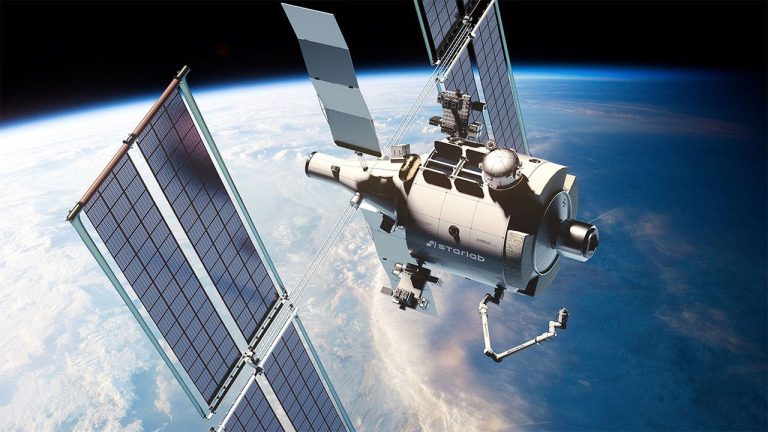
In his first year of graduate school, in 2013, Michael Wagman walked into his advisor’s office and asked, “Can you help me simulate the universe?”
Wagman, a theoretical physicist and associate scientist at the US Department of Energy’s Fermi National Accelerator Laboratory, thought it seemed like a reasonable question to ask. “We have all of these beautiful theoretical descriptions of how we think the world works, so I wanted to try and connect those formal laws of physics to my everyday experience of reality,” he says.
In response to the question, Wagman says, his advisor chuckled. Simulating the universe is impossible. There are too many variables; there is too much we don’t understand.
But the fact that we can use computers to simulate anything with any semblance of accuracy is a gigantic leap for the state of the art from just a century ago. That’s why scientists like Wagman remain undeterred in their quest to figure out the universe’s underlying code.
In The Universe in a Box, published this year, University College London professor of cosmology Andrew Pontzen bolsters those efforts by charting humanity’s progress over time toward a simulation of the universe.
A history of computer simulations
Simulations are kind of like hypothetical experiments, Pontzen says. “We set up hypothetical situations inside computers that we’ve programmed—in our case, with certain laws of physics—and then we ask the computer to figure out the consequence of that situation. What should happen next?”
Curious minds have been practicing simulations in this way since antiquity, he says. More than 2,000 years ago, ancient Greeks used a rudimentary computer of sorts, called the Antikythera Mechanism, to calculate the occurrence of astronomical events, such as eclipses.
But perhaps the first mention of a more modern concept of simulation appears in the writings of Ada Lovelace, an English mathematician and pioneer of computing. In the mid 19th century, Lovelace worked alongside Charles Babbage, an English polymath and inventor who envisioned a precursor to the modern computer called the Analytical Engine. He didn’t quite manage to build it, but his goal was to create a machine capable of performing an endless variety of calculations just by changing coded instructions fed to it on strips of card.
Lovelace recognized the potential of the Analytical Engine, Pontzen says. “She wrote about the fact that this machine could take [theoretical] science from being a pursuit of abstract equations and turn that into something much more practical.”
In the early twentieth century, mathematician and meteorologist Lewis Fry Richardson proposed building a giant amphitheater filled with mathematicians, calculating together to produce simulations that forecast the weather. “He believed the equations of physics that describe how materials behave could be applied to the material in Earth’s atmosphere,” Pontzen says. “That’s essentially what modern simulations of the weather do today.”
One of the earliest examples of computer simulations advancing the field of cosmology comes from the work of Beatrice Tinsley in the late 1960s. Tinsley, an astronomer and cosmologist (and the first female astronomy professor at Yale University), used simulations to demonstrate that not only are scientists looking back in time when viewing distant galaxies, but the light from those distant galaxies must change as those galaxies mature. This aging effect changed the interpretation of cosmologists’ early maps of the universe.
“She constructed these simulations—which would be considered very rudimentary by today’s standards, but still recognizably simulations—where she showed that, given what we know about the universe, distant and close galaxies are very different,” Pontzen says. “And in some sense, everything we’ve done since then is putting flesh on the bones of that idea that galaxies change a lot over time.”
Chipping away at a cosmic problem
Although scientists cannot yet simulate the entire evolution of the universe, they have managed to use simulations to learn about phenomena they are unable to detect directly, like dark matter and dark energy.
“Data from the Hubble Space Telescope, for example, told us that the universe is expanding at an accelerating rate,” a phenomenon attributed to dark energy, Pontzen says. “It was very exciting, but it wasn’t a total surprise, actually, because simulations had already shown that was probably true.”
Cosmologists and physicists use simulations to better understand how the universe works over cosmic time: How do certain structures form? How do typical galaxies evolve?
Simulating specific aspects of the universe is certainly helpful, but it’s impossible to glean the bigger picture of how the universe works by looking at just one aspect, says Dorota Grabowska, a theoretical physicist and research assistant professor at the University of Washington.
“We still have a lot of questions about early universe dynamics, and it’s really hard to figure out how to calculate certain components of that,” Grabowska says. “It would be much easier if I could just plug in an initial state when the universe started out, then just let it naturally evolve with time and take some measurements. But that’s really hard to do, for a multitude of reasons.”
One challenge is that the Standard Model of particle physics explains three of the four fundamental forces of nature—the electromagnetic force, the weak force, and the strong force—but not the fourth—gravity.
“We don’t know how to simulate gravity,” Wagman says. “We know that Einstein’s Theory of General Relativity and Newton’s Law of Gravitation are both good approximations that work very well at low energies, but the math that goes into those breaks down when you try and ask questions about ultra-high energy states,” such as the conditions of the Big Bang.
The other three forces certainly aren’t easy to simulate, either.
The strong force, for instance, governs the interactions of fundamental particles that make up protons and neutrons. These interactions—described by quantum chromodynamics, or QCD—are so strongly coupled that there’s no clear delineation of what aspects may be more important than others to even allow approximations to be made. “A lot of our pen and paper methods of trying to calculate it don’t work because we can’t make approximations,” Grabowska says.
To circumvent this, scientists use quantum computing to run numerical simulations using statistical sampling that yields probabilities of various outcomes—but only on a timescale that differs from reality. “So that means we don’t actually simulate QCD as it appears in our universe,” Grabowska says. “We simulate one that is similar and can be directly connected, but it’s not the same.”
For the most complicated simulations, scientists have come up with calculations to compensate for what they don’t understand and to make assumptions based on what they do. “Simulations of the universe can show us what’s plausible, given what we already know,” Pontzen says. “The simulations just carry with them a range of caveats to make the simulation work.”
The power to simulate the universe
Even if scientists could figure out how to describe all four fundamental forces across real time, and even if they understood all the laws of physics, the computer power they would need to simulate the universe is still far out of reach.
If the goal is to capture everything in the universe in a simulation, that means there should be one atom in the simulation for every atom in the universe. “There is no computer on Earth that will come remotely close to being able to do this,” Pontzen says. “The universe is just too complex. There’s just too much stuff in it.”
On the other hand, Wagman says, “the boundaries of how big of a universe we can simulate are ever increasing, both through increased computing power, and even more importantly, through people coming up with better algorithms that enable us to simulate more complex things more efficiently.”
Simulations show us what’s plausible so we can make predictions about how the natural world works, and in many cases, those predictions turn out to be correct.
“This doesn’t mean everything is correct, and in fact it’s impossible for everything to be correct,” Wagman says. “But it does give us some confidence that we’re on the right track. It teaches us something so we can continue building up an incrementally more accurate view of the universe.”







